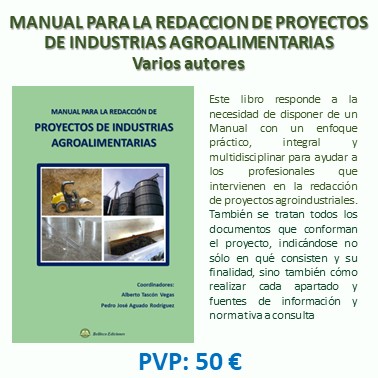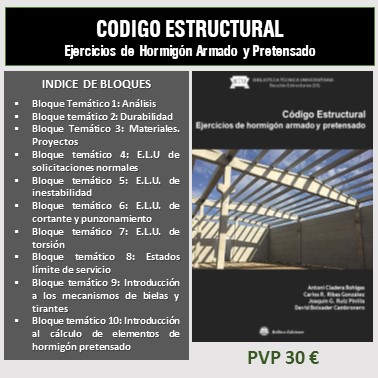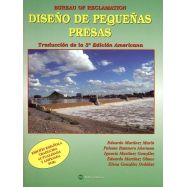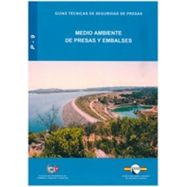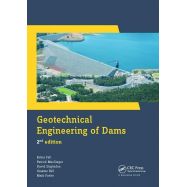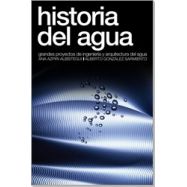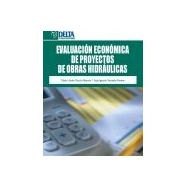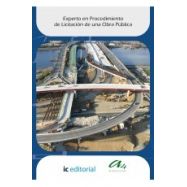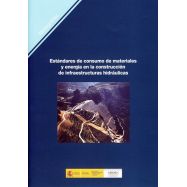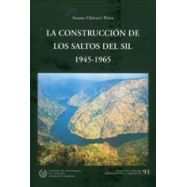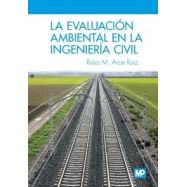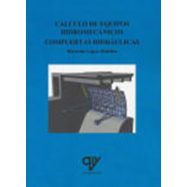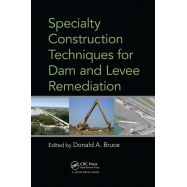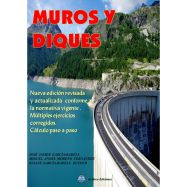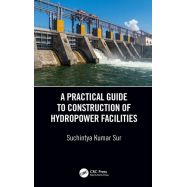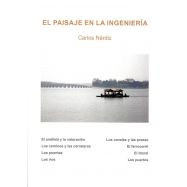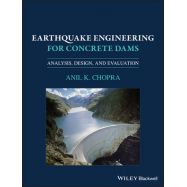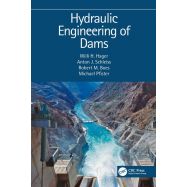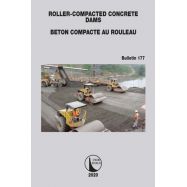Ningún producto
Materias
- BELLISCO EDICIONES. Nuestro Fondo Editorial
- FONDOS EDITORIALES EN DISTRIBUCION
- LIBROS TECNICOS EN INGLES
- ARQUITECTURA - URBANISMO
- AUTOMOCION - MOTORES - VEHICULOS
- AVIONICA - AERONAUTICA
- CALIDAD - EMPRESARIALES - GESTION
- CIENCIAS EXACTAS - MATEMATICAS
- CIENCIAS NATURALES Y APLICADAS
- CIENCIAS DE LA TIERRA - INGENIERIA DEL SUELO
- DICCIONARIOS TECNICOS
- ESTRUCTURAS - CONSTRUCCION
- FORMACION PROFESIONAL
- HIDRAULICA - INGENIERIA SANITARIA - AGUAS
- INGENIERIA CIVIL - OBRAS PUBLICAS
- INGENIERIA MECANICA E INDUSTRIAL
- INSTALACIONES . GENERALES, EN EDIFICACION E INDUSTRIALES
- MATERIALES
- MEDIO AMBIENTE
- NORMATIVA
- OPOSICIONES
- PREVENCION DE RIESGOS LABORALES
- PROGRAMAS INFORMATICOS DE CALCULO
- TECNOLOGIA DE LOS ALIMENTOS: Industrias: Conservación, envasado y cadenas alimentarias
- TELECOMUNICACIONES - INFORMATICA - TECNOLOGIA DE LA INFORMACION
- OUTLET DE BELLISCO: Descuentos de hasta el 80%
- RELIGION, TEOLOGIA, MORAL Y ESPIRITUALIDAD
- VARIOS
- OFERTAS
- PROMOCIONES
- NEWSLETTER
- CATEGORIAS DESTACADAS
- ULTIMAS NOVEDADES BELLISCO
- ARQUITECTURA SOSTENBILE
- URBANISNO
- MATEMATICAS EN GENERAL
- AGRONOMOS-AGRICULTURA-FORESTALES
- ELECTROMAGENTISMO-ELECTRONICA-ELECTRICIDAD
- INGª Y MECÁNICA DEL SUELO. CIMENTACIONES
- TOPOGRAFIA, FOTOGRAMETRÍA, GEODESIA
- EDIFICACION
- ANALISIS DE ESTRUCTURAS, RESISTENCIA DE MATERIALES, ELASTICIDAD, CALCULO MATRICIAL
- OFICIOS VARIOS
- ABASTECIMIENTO Y DISTRIBUCION DE AGUA
- PUENTES
- TUNELES Y OBRAS SUBTERRANEAS
- MAQUINAS Y MECANISMOS
- SOLDADURA
- CLIMATIZACION
- INSTALACIONES DE AGUA
- INSTALACIONES ELECTRICAS CIENCIA E INGENIERIA DE MATERIALES
- ENERGIAS RENOVABLES
- DESARROLLO SOSTENIBLE
- INFORMATICA-SISTEMAS-FORMACION-PROGRAMAS
-
DAMS AND APPURTENANT HYDRAULIC STRUCTURES, 2ND EDITION
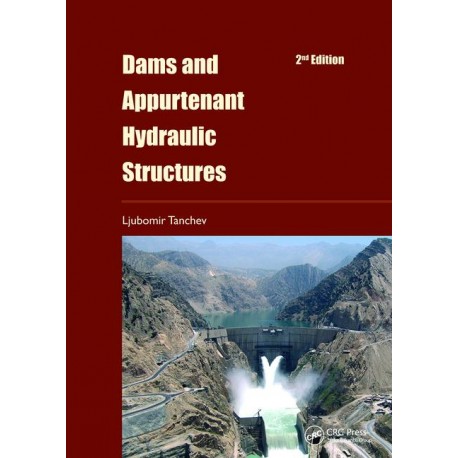 Ver más grande
Ver más grande Referencia: Código 07684
Mayo de 2018 - Ljubomir Tanchev - Refª 7684
Ljubomir Tanchev
Mayode 2018 Páginas: 1116
Códigp 7684 ISBN/EAN:9781138073654
Features
- The most comprehensive overview of dams and appurtenant hydraulic structures available on the market
- Treats the entire life span of dams and other related structures, from design and construction through surveillance and maintenance to reconstruction
- Serves as an invaluable reference work for professionals, and as a unique resource for academics and students
- Richly illustrated, wholly revised and significantly expanded
Summary
Dams and Appurtenant Hydraulic Structures, now in its second edition, provides a comprehensive and complete overview of all kinds of dams and appurtenant hydraulic structures throughout the world.
The reader is guided through different aspects of dams and appurtenant hydraulic structures in 35 chapters, which are subdivided in five themes:
I. Dams and appurtenant hydraulic structures – General;
II. Embankment dams;
III. Concrete dams;
IV. Hydromechanical equipment and appurtenant hydraulic structures;
V. Hydraulic schemes.
Subjects treated are general questions, design, construction, surveillance, maintenance and reconstruction of various embankment and concrete dams, hydromechanical equipment, spillway structures, bottom outlets, special hydraulic structures, composition of structures in river hydraulic schemes, reservoirs, environmental effects of river hydraulic schemes and reservoirs and environmental protection. Special attention is paid to advanced methods of static and dynamic analysis of embankment dams.
The wealth of experience gained by the author over the course of 35 years of research and practice is incorporated in this richly-illustrated, fully revised, updated and expanded edition. For the original Macedonian edition of Dams and Appurtenant Hydraulic Structures, Ljubomir Tanchev was awarded the Goce Delchev Prize, the highest state prize for achievements in science in the Republic of Macedonia.
This work is intended for senior students, researchers and professionals in civil, hydraulic and environmental engineering and dam construction and exploitation.
Table of Contents
Preface
Preface to the first edition
PART 1
Dams and appurtenant hydraulic structures – General
1 Utilization of water resources by means of hydraulic structures
1.1 Introduction
1.2 Hydraulic structures (definition, classification)
1.3 General features of hydraulic structures
1.4 Intent of dams. Elements of a dam and a reservoir
1.5 Appurtenant hydraulic structures
1.6 Short review of the historical development of hydraulic structures
2 Foundations of dams
2.1 Foundations for hydraulic structures in general
2.2 Rock foundations
2.3 Semi-rock and soil foundations
2.4 Requirements for the foundation
2.5 Investigation works regarding dam foundations
2.5.1 Indirect investigation methods
2.5.2 Direct investigation methods
2.5.3 Sampling
2.5.4 Testing
2.6 Improvement of foundations
3 Seepage through dams
3.1 Action of seepage flow
3.2 Mechanical action of seepage flow on the earth’s skeleton
3.3 Seepage resistance of earth foundations and structures
3.4 Theoretical aspects of seepage
3.5 Practical solution of the problem of seepage
3.6 Seepage in anisotropic soil conditions
3.7 Seepage in non-homogeneous soil conditions
3.8 Seepage of water through rock foundations
3.9 Lateral seepage
3.10 Seepage through the body of concrete dams
4 Forces and loadings on dams
4.1 Forces and loadings on dams in general
4.2 Forces from hydrostatic and hydrodynamic pressure
4.3 Influence of cavitation and aeration on hydraulic structures
4.4 Influence from waves
4.5 Influence of ice and water sediment
4.6 Seismic forces
4.7 Temperature effects
4.7.1 Temperature effects on embankment dams
4.7.2 Temperature effects on concrete structures
5 Designing hydraulic structures
5.1 Basic stages in the process of the creation and use of hydraulic structures
5.2 Investigation for design and construction of hydraulic structures
5.3 Contents of the hydraulic design and design phases
5.4 Project management and the role of legislation
PART 2
Embankment dams
6 Embankment dams – general
6.1 Introduction, terminology, and classification
6.2 Historical development of embankment dams
6.3 Dimensions of the basic elements of embankment dams
6.4 Choice of the dam site
6.5 Materials for construction of embankment dams
6.6 Choice of type of embankment dam
6.7 Tailings dams
6.7.1 Definition and general features
6.7.2 Classification of tailings dams
6.7.3 Methods of construction of tailings dams
7 Seepage through embankment dams
7.1 Kinds of seepage through the embankment dam body
7.2 Seepage line and hydrodynamic net in embankment dams
7.3 Measures against the harmful effect of seepage
7.3.1 Action against local seepage rising
7.3.2 Action against internal erosion
7.4 Calculations of the casual seepage strength of earthfill dams
8 Static stability of embankment dams
8.1 Introduction
8.2 Classical methods
8.2.1 Method of slices
8.2.2 Wedge method
8.2.3 States in which stability of embankment dams is examined
8.2.4 Stability of rockfill dams
8.3 Advanced methods
8.3.1 Application of the Finite Element Method
8.3.2 Specific properties of the application of the Finite Element Method (FEM) for analysis of embankment dams
8.3.3 Choice of constitutive law
8.3.4 Simulation for dam construction in layers
8.3.5 Simulation for filling the reservoir and the effect of water
8.3.6 Collapse settlement
8.3.7 Simulation of behaviour at the interfaces of different materials
8.3.8 Analysis of consolidation
8.3.9 Creep of materials in the body of embankment dams
8.3.10 Three-dimensional analysis
9 Dynamic stability of embankment dams
9.1 Effect of earthquakes on embankment dams
9.2 Assessment of design earthquake
9.2.1 Strength, attenuation, and amplification of earthquakes
9.2.2 Design earthquake
9.3 Liquefaction
9.4 Analysis of stability and deformations in embankment dams induced by earthquakes
9.4.1 Pseudo-static method
9.4.2 Pseudo-static methods with a non-uniform coefficient of acceleration
9.4.3 Equivalent linear method
9.4.4 Pure nonlinear response method
9.5 Case studies of recent actual events
9.5.1 Case study of Aratozawa dam (Japan, 2008)
9.5.2 Case study of Zipingpu dam (China, 2008)
10 Earthfill dams
10.1 Classification and construction of earthfill dams
10.2 Structural details for earthfill dams
10.2.1 Slope protection
10.2.2 Water-impermeable elements
10.2.3 Drainages
10.3 Preparation of the foundation and the joint between earthfill dams and the foundation
10.3.1 Preparation of the general foundation
10.3.2 Preparation of the foundation when using a dam cutoff trench
10.3.3 Joint of the earthfill dam and the foundation
11 Earth–rock dams
11.1 Construction of earth–rock dams
11.2 Earth–rock dams with vertical core
11.3 Earth–rock dams with a sloping core
11.4 Earth–rock dams of ‘soft’ rocks
11.5 Fissures in the core of earth–rock dams
11.5.1 Kinds of fissures and causes for their occurrence
11.5.2 Measures for preventing the occurrence of fissures
11.6 Designing earth–rock dams in seismically active areas
12 Rockfill dams with reinforced concrete facing
12.1 Definition, field of application and construction
12.2 Modern dams with reinforced concrete facing
12.2.1 Rockfill dam body
12.2.2 Concrete plinth
12.2.3 Concrete face slabs
12.2.4 Joints for reinforced concrete facing slabs
12.2.5 Perimeter joint
12.2.6 Parapet wall and camber
12.3 Construction of the reinforced concrete facing
12.4 Examples of modern CFRDs
12.4.1 Examples from the period 1971–1980
12.4.2 Examples from the period 1982–2000
12.4.3 First decade of XXI century
12.5 Concrete facings of non-conventional concrete
13 Rockfill dams with asphaltic concrete and other types of facings
13.1 Rockfill dams with asphaltic concrete facing
13.1.1 General characteristics
13.1.2 Composition and characteristics of hydraulic asphaltic concrete
13.1.3 Construction of the asphaltic concrete facings
13.1.4 Joint of the lining with a gallery or concrete cutoff in dam’s toe
13.1.5 Joint of the facing with dam’s crest
13.2 Rockfill dams with steel facing
13.3 Rockfill dams with facing of geomembrane
13.3.1 General
13.3.2 Examples of rockfill dams with geomembrane facing
14 Rockfill dams with internal non-earth core
14.1 Rockfill dams with asphaltic concrete core
14.1.1 Function, conditions of work and materials
14.1.2 Structure of the asphaltic concrete cores
14.1.3 Recent examples
14.1.4 Joint of asphaltic concrete core with the foundation and lateral concrete structures
14.2 Other types of non-earth cores
14.2.1 Concrete core walls
14.2.2 Grout and plastic concrete walls (cores)
14.3 Stability of earth-rock dams with asphaltic concrete core
15 Monitoring and surveillance of embankment dams
15.1 Task and purpose of monitoring
15.2 Monitoring of pore pressure and seepage
15.2.1 Hydraulic piezometers
15.2.2 Electric piezometers
15.2.3 Monitoring of seepage
15.3 Monitoring of displacements
15.3.1 Measurement of displacements at the surface of the dam
15.3.2 Measuring displacements in the interior of the dam
15.4 Measurements of stresses
15.5 Seismic measurements
15.6 General principles on the selection and positioning layout of measuring instruments
PART 3
Concrete dams
16 Gravity dams on rock foundations
16.1 Gravity dams in general
16.2 Mass concrete for dams
16.2.1 General
16.2.2 Constituent elements of mass concrete
16.2.3 Parameters of concrete mixture
16.2.4 Fabrication and placing of concrete
16.3 Cross-section of gravity dams
16.3.1 Cross-sections in general
16.3.2 Theoretical cross-section
16.3.3 Practical cross-section
16.4 Dimensioning of concrete gravity dams
16.4.1 Elementary methods
16.4.2 Modern methods
16.5 Determination of stresses
16.5.1 Determination of stresses by the gravitational method
16.5.2 Calculation of stresses by using the theory of elasticity
16.5.3 Calculation of stresses by using the Finite Element Method
16.5.4 Influence of temperature changes, shrinkage and expansion of concrete on stresses in dams
16.5.5 Permissible stresses and cracks
16.6 General structural features of gravity dams
16.7 Stability of gravity dams on rock foundation
16.7.1 Dam sliding and shearing across foundation
16.8 Hollow gravity dams
17 Gravity dams on soil foundations
17.1 Fundamentals of gravity dams on soil foundation
17.2 Schemes for the underground contour of the dam
17.3 Determination of basic dimensions of underground contour
17.4 Construction of elements of the underground contour
17.5 Construction of dam body
17.6 Dimensioning and stability of gravity dams on soil foundation
18 Roller-compacted concrete gravity dams
18.1 Introduction
18.2 Characteristics of roller-compacted concrete
18.2.1 Roller-compacted concrete mixture, placement and properties
18.2.2 Lift joint bond
18.3 Types of roller-compacted concrete
18.4 Trends in development of dams made of roller-compacted concrete
18.5 Improving the water-impermeability of dams made of roller-compacted concrete
18.6 Cost of dams made of roller-compacted concrete
18.7 Examples of dams made of roller-compacted concrete
18.7.1 Examples of the early period of construction of RCC dams
18.7.2 Examples from recent practice
18.7.3 RCC dam construction practice in China
18.7.4 RCC dam construction practice in Spain
18.7.5 RCC dam construction practice in Japan
18.8 Hardfill dams
18.8.1 Basic idea and concept
18.8.2 Hardfill as a dam construction material
18.8.3 Design of hardfill dams
18.8.4 Main features and field of application
19 Buttress dams
19.1 Definition, classification, and general conceptions
19.2 Massive-head buttress dams
19.3 Flat-slab buttress dams
19.4 Multiple-arch buttress dams
19.5 Conditions for application of buttress dams
20 Arch dams
20.1 Arch dams in general – classification
20.2 Development of arch dams through the centuries
20.3 Methods of designing arch dams
20.3.1 Basic design
20.3.2 Arch dams with double curvature
20.3.3 Form of arches in plan and adaptation to ground conditions
20.4 Structural details of arch dams
20.5 Roller-compacted concrete arch dams
20.6 Static analysis of arch dams
20.6.1 Method of independent arches
20.6.2 Method of central cantilever
20.6.3 The trial-load method
20.6.4 The Finite Element Method
20.6.5 The experimental method
21 Dynamic stability of concrete dams
21.1 Earthquake effects on concrete dams
21.2 Methods for dynamic analysis of concrete dams
21.2.1 Linear analysis and response of the structure
21.2.2 Nonlinear analysis and the response of the dam
21.2.3 Dynamic analysis of RCC and hardfill dams
21.3 Knowledge gained from practice and experiments
21.3.1 Knowledge gained from case studies
21.3.2 Laboratory and field experiments
21.4 Recommendation for design and construction of concrete dams in seismically active areas
22 Monitoring and surveillance of concrete dams
22.1 Monitoring, surveillance, and instrumentation of concrete dams – general
22.2 Monitoring by precise survey methods
22.3 Surveillance with embedded instruments
22.4 Automatization and computerization of monitoring
PART 4
Hydromechanical equipment and appurtenant hydraulic structures
23 Mechanical equipment and appurtenant hydraulic structures – general
23.1 Hydromechanical equipment – general
23.1.1 Introduction
23.1.2 Classification of gates and valves
23.1.3 Forces acting on gates and valves
23.2 Mechanisms for lifting and lowering of the gates and valves. Service bridges
23.3 Installation and service of gates and valves
23.4 Appurtenant hydraulic structures
23.4.1 Definition, function and capacity
23.4.2 Classification of spillways and bottom outlets
23.5 Evacuation of overflowing waters via a chute spillway
23.6 Energy dissipation of the spillway jet
23.7 Selection of type of spillway structure
24 Surface (crest) gates
24.1 Basic schemes of surface (crest) gates
24.2 Surface (crest) gates transferring water pressure to side walls or piers
24.2.1 Ordinary plain metal gates
24.2.2 Special plain gates
24.2.3 Stop-log gates
24.2.4 Radial gates
24.2.5 Roller gates
24.3 Surface (crest) gates transferring the water pressure to the gate sill
24.3.1 Sector and drum gates
24.3.2 Flap gates
24.3.3 Bear-trap gates
24.3.4 Inflatable gates
25 High-head gates and valves
25.1 General characteristics – classification
25.2 High-head gates transferring pressure to the structure directly through their supports
25.2.1 Plain high-head gates
25.2.2 Radial (tainter) high-head gates
25.2.3 Diaphragm gate
25.3 Valves transferring the pressure through the shell encasing the valve
25.3.1 Waterworks valve types
25.3.2 Disc-like or butterfly valves
25.3.3 Cone valve
25.3.4 Needle valves and spherical valves
25.4 Cylindrical balanced high-head valves
26 Spillways passing through the dam’s body
26.1 Crest spillways
26.1.1 Crest spillways at concrete dams
26.1.2 Crest spillways at embankment dams
26.2 High-head spillway structures
27 Spillways outside the dam’s body
27.1 Introduction
27.2 Overfall (ogee) spillway structure
27.3 Side-channel spillway
27.4 Shaft (morning glory) spillway
27.4.1 Shaft spillway with circular funnel crest
27.4.2 Special types of shaft spillways
27.4.3 Tower spillway
27.5 Labyrinth spillway
27.6 Siphon spillways
28 Bottom outlet works
28.1 Basic assumptions on designing bottom outlet works
28.2 Bottom outlet works in concrete dams
28.3 Bottom outlet works in embankment dams
29 Special hydraulic structures
29.1 Introduction
29.2 Transport structures
29.3 Hydraulic structures for the admission and protection of fish
30 River diversion during the construction of the hydraulic scheme
30.1 River diversion during the construction of dams and appurtenant hydraulic structures – general
30.2 Construction of the structures without river diversion from the parent river channel
30.2.1 Method with damming of the construction (foundation) pit
30.2.2 Method without damming of the construction pit
30.3 Construction of the structures with river diversion from the river channel
30.3.1 Types of cofferdams
PART 5
Hydraulic schemes
31 Composition of structures in river hydraulic schemes
31.1 Definition and classification of hydraulic schemes
31.2 General conditions and principles for the composition of hydraulic schemes
31.3 Characteristics of river hydraulic schemes for different water economy branches
31.4 Aesthetic shaping of hydraulic schemes
31.5 River hydraulic schemes without pressure head
31.6 Low-head hydraulic schemes
31.7 Medium-head river hydraulic schemes
32 High-head river hydraulic schemes
32.1 High-head river hydraulic schemes on mountain rivers (type I)
32.2 High-head hydraulic schemes on middle and low parts of rivers
32.3 Pumped-storage hydraulic scheme
33 Reservoirs
33.1 Introduction
33.2 Formation and safety of reservoirs
33.2.1 Stability of reservoir banks
33.2.2 Water-impermeability of the reservoir
33.2.3 Seismicity of the ground in the zone of the reservoir
33.2.4 Water absorption of the ground in the zone of the reservoir
33.2.5 Evaporation
33.2.6 Sediment accumulation
33.3 Resettlement of population and relocation of structures
33.4 Sports and recreational facilities
34 Negative effects of hydraulic schemes and environmental protection
34.1 Types of negative effects on the environment
34.1.1 Changing the land into the area of the reservoir
34.1.2 Change of the flow downstream of the dam
34.1.3 Damming the migration paths of fish and wild animals
34.1.4 Change in the surrounding landscape and the microclimate
34.2 Social and ecological monitoring
34.3 Environmental protection – selection of a solution with minimum negative effects on the environment
35 Restoration and reconstruction of hydraulic schemes
35.1 Need for restoration and reconstruction
35.2 Restoration of dams and hydraulic schemes
35.3 Reconstruction of hydraulic schemes
References
Subject index
Index of dams
TAMBIEN LE PUEDE INTERESAR
- 90,00 €
- 54,00 €
- 54,00 €
- 126,00 €


